THE FARM FROM WHICH THE PRODUCE was sourced may be idyllic. The dining room might seem simple and serene. But the kitchen can be a battlefield, full of anger and abuse.
“Meanness is a bullshit way to handle your business. There is a zero chance of that happening here,” says Chef Noah Sandoval of Chicago’s newest venture into exquisitely artful fine dining, Oriole.
There seems to be a remarkable level of collegiality and even conviviality at Oriole, which is crucial in a restaurant that has opened up its kitchen to the customers, who can look through picture windows at the food as it is prepared—and at what kind of a mood the people making it are in. This may be the friendliest fine dining room in town, and the open kitchen, separated from the dining room by big picture windows, is run by a team of friends.

Oriole, 661 W. Walnut
One could expect the hostess of Oriole to affect a “too hip for the room” cool, but she was as warm as New Orleans. So was General Manager Cara Sandoval, Noah’s wife, who supervises Oriole’s dining room. One could expect the young dining room servers to be tentative and anxious, but they were confident, easygoing and knowledgeable; it turns out that most of them have worked in a kitchen and know a lot about food.
“I decided what I wanted to do a long time ago,” said Noah, who worked at Schwa, the pioneering we-do-things-how-we-feel-like-doing-them dining experience in Chicago, and then was head chef at Senza, the Lakeview gluten-free fine dining restaurant, where he won a Michelin star. “I didn’t want 8 seats, but I didn’t want 50, either. We have 28 seats. I wanted to work with my friends; I wanted the kitchen to be semi-open; I wanted to be in Chicago, and I wanted to work with my wife Cara. I knew all of these things. This wasn’t a case of investors showing up and me thinking, ‘Hmm, what do I want to do?’”
We have created an environment where we can live to work, where before we were working to get by and live.
One of those friends is Pastry Chef Genie Kwon, who worked at Eleven Madison Park in New York and for BOKA and GT Fish & Oyster here. Her quest for a righteous culture to work in meshes with Sandoval’s desire to work with his friends. “Noah was saying the other day that we have created an environment where we can live to work, where before we were working to get by and live,” she said. “To have that flipped makes the dynamic of it feel less like work, but everybody is still very professional. We took the experience of every person who works here, and we built a restaurant that we want to work in.”

Noah Sandoval and Genie Kwon
Everyone I interviewed at Oriole echoed the sentiment. Savory side Sous Chef Tim Flores said, “We’re tight-knit.” Sommelier Aaron McManus said, “Everyone seems to have the same goal and the same idea about where we want Oriole to go. it’s amazing; I don’t think that happens all that often.” Cold side Sous Chef John Gorr simply said, “I’m friends with Noah,” by way of explaining how he got here.
Cara Sandoval acknowledged the danger of the approach—“Working with your friends is great, but there is also a sense of not wanting to let them down. To not represent their talents professionally would be crushing.”

Cara Sandoval checks in a shipment of wine
She understands what Oriole is gambling for—“I think this is a continuation of what we have done, but the stakes are higher and more is expected.” Not least because they no longer get a pass for working without gluten. “Not too much was expected given the dietary limits and location, so it was a pleasant surprise,” said Cara. “But here we have no dietary limitations, and higher expectations to live up to.”
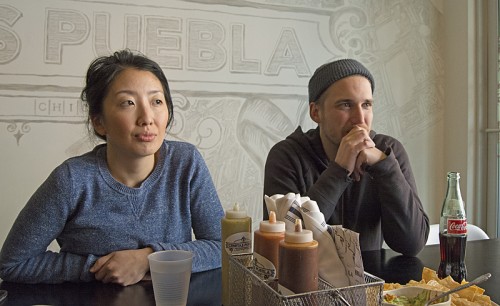
Three weeks before
JUST THREE WEEKS PRIOR TO ORIOLE’S opening, the dining room was a dusty, bare room with only lighting fixtures and banquettes wrapped in plastic indicating that dining was in its future. The kitchen looked like a Going Out of Business Sale at Home Depot. During lunch with Kwon and Sandoval at Cernitas Puebla, they were in a mild state of shock. Kwon showed me her moving scars from strapping ovens and fridges into place, and both of them forgot to eat. That Oriole is their first venture as entrepreneurs was written all over their harried faces.
But Sandoval and Kwon’s confidence showed through even then. He considers the experience a dream come true.
“Everything is new at Oriole; everything is custom to what I want it to be,” Sandoval said. “It was zero to 60 for me. Jackpot! People just came out of the woodwork saying they were willing to support us.”
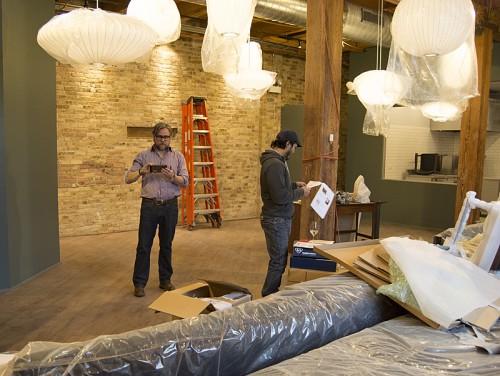
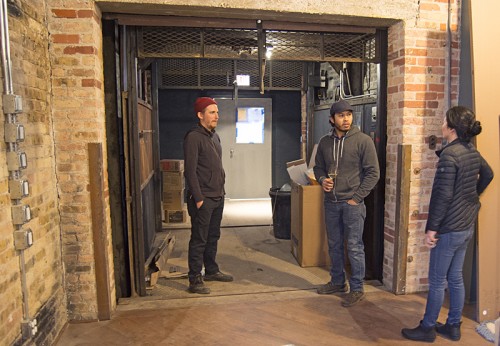
Sandoval and Kwon with sous chef Tim Flores
The restaurant has about 10 investors and there are three main partners—Sandoval, Kwon, and businessman Mike Fishman. After Sandoval left Senza, Oriole seemed to present itself to him, one door opening after another.
A building owner approached Sandoval and said he had a great space for a restaurant. Fishman and other investors who had said they would support Sandoval in his own restaurant turned out to be the real deal. Many of the people he wanted to work with—most notably, Kwon, whose reputation had blossomed as the pastry chef at Boka—were available: “I’m the luckiest person,” Sandoval said, “though Cara would probably say ‘spoiled.’”
About the time we had lunch, however, they had run into that terribly truthful Yiddish proverb: “Don’t ask for something; you might get it.”
“There is so much more to opening a restaurant than people think,” Sandoval said. “‘Oh, you have to hire people.’ (snorts) I never had to think of how wide hallways need to be or whom you had to contact to get a liquor license expedited. There was a lot of learning; I would do many things differently the next time around—but with lots of help from our investors and the staff, we opened it.”
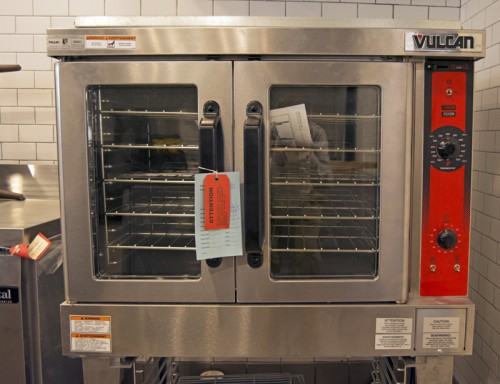
Kwon said her biggest challenge was “the decision making about purchasing things like equipment that will be permanently in use. It has been a comfort that I’m never alone in that decision making process. Another challenge was trying to create the right culture. There was a very specific culture at Flour Bakery in Boston at my first job, and I loved it and want to create it here. People here need to be adaptive. It’s tough finding good cooks and staff, because the restaurant scene in Chicago is so busy, but everybody here wants to cook and learn. Everybody is on the same page. At other places, it was hard to get people to care; here everybody cares too much (laughs)!”
Gallery: Selections from the menu at Oriole
THE PRINTED MENU AT ORIOLE IS for education, not for choosing food. While the kitchen may make alterations to satisfy a diner’s food sensitivities or aversions, Oriole serves one meal a night—a 15-course dazzling parade of supremely curated and prepared food.
Oriole’s food is contemporary, but doesn’t fall into any rigid category that I could fathom. There is a blowtorch and liquid nitrogen in the kitchen, but there isn’t a lot of culinary deconstruction going on—“We’ll use liquid nitrogen, but not in an overly molecular way,” Kwon said—“using it to enhance what we’re putting out.”
Intriguing textures are everywhere in the hot food at Oriole—“I’m obsessed with them,” Sandoval admits—and the cold side dishes are replete with them, too. The sourdough bread is festooned with toasted grain; a bowl of custard comes sprinkled with granular chicory. Kwon and Sandoval seem to be the queen and king of crunchy, with a talent for adding it in surprising and pleasing ways.
The tasting menu approach is a particularly big positive for the pastry chef—“It has been wonderful to be involved in the design of the restaurant—everything’s new, everything works! There has been this stigma of pastry chefs being shoved into a corner in the darkest, smallest spot in the restaurant because it’s not as lucrative; it’s often the spot where restaurants cut costs. But doing a fixed price menu means that every person gets every dessert. It has been amazing to work with people who understand that and why the tasting menu route has been so great for us, because we want the meal to be as beautifully balanced at the end of the meal as it is at the beginning,” said Kwon.
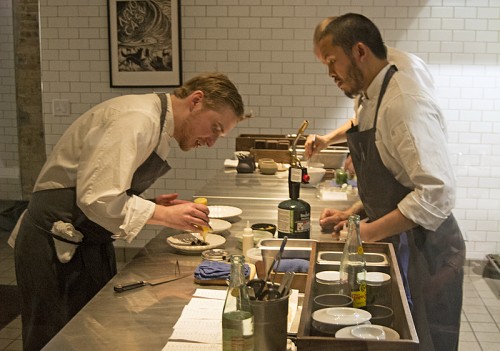
Because there are so many courses, Kwon said she works very closely with the savory side “to make sure that we leave the guests satisfied, but not overwhelmed—that’s a big goal. What that means is that I have a total of perhaps 10 or 12 bites per diner before overwhelming happens, depending on how many courses we do.”
Everybody preaches that everyone is a VIP, but that’s not the reality in many restaurants. The challenge is to interact with everyone if we are going to be interactive.
“At the end of a meal here, we want people to say that it was the best experience they’ve ever had,” said Kwon. “We want them to come back, to spread the word. Once we’ve had you in the restaurant, we can pick up on little things and make notes to customize your experience the next time you visit. We don’t expect people to be here all the time, of course, but we expect to have regulars. We want to provide variety, genuine service, and want to treat everyone equally. Everybody preaches that everyone is a VIP, but that’s not the reality in many restaurants. We have designed the dining room and kitchen to be very open; everybody can see everything. The challenge is to interact with everyone if we are going to be interactive.”
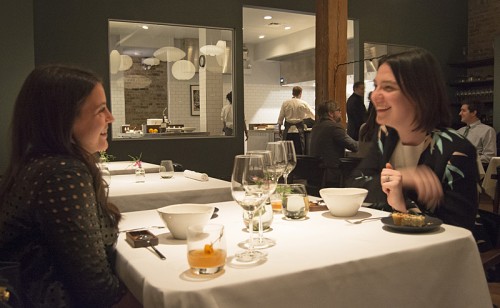
ORIOLE CAN AFFORD JUST 28 SEATS because the 15 courses go for $175. A wine accompaniment arranged by Sommelier Aaron McManus, a veteran of L20 and Intro, is $125, a McManus selection of mixed beverages is $75, or you can buy something to drink the traditional way.
Sandoval’s overarching goal is simple: “Best restaurant ever,” and each of his friends in the enterprise translates that into their own realm. “At Senza I was developing criteria for good service as I went along,” said Cara Sandoval. “Now I know what I want and what’s good.”
“I’ve been looking forever for a chef who really wants to work with me, who will come up with flavors and profiles and thinks about where a wine can go,” said McManus. “Noah’s willing to put food and wine together in a collaborative effort, a situation which I have not been in before. It will be easier to make wine decisions, because I have a better idea of what the food will be like.”
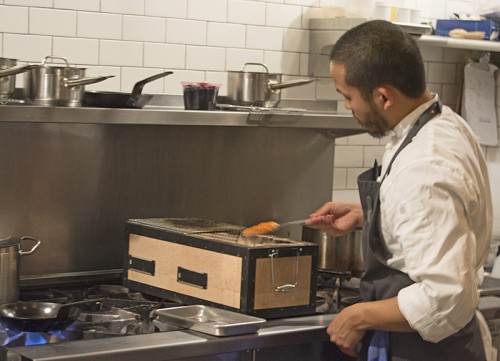
Gorr said, “I’m not just taking what I did at Senza or Publican Quality Bread over here; I’m trying to find my own style; it’s a work in progress.”
“At Senza I decided not to jump around, unlike many people,” said Flores. “The type of food Noah is doing is what I would like to be doing. I really enjoyed it, so I decided to stick with Noah for an extended time.”
Nobody talked about what their next project would be.
Larry Rand has been writing about Chicago since the time of the Black Angus Steak House, Armando’s and the Chez Paree, where his dad Harry had worked. A former Contributing Dining Editor to Chicago magazine, his work has appeared in Cooking Light, Outside, Playboy, Field & Stream; Chicago’s Reader, Tribune, Sun-Times and Daily News, and on HBO, Comedy Central, PBS, WXRT, WFMT and NPR.
Latest
Join the Discussion
After you comment, click Post. If you're not already logged in you will be asked to log in or register with Disqus.












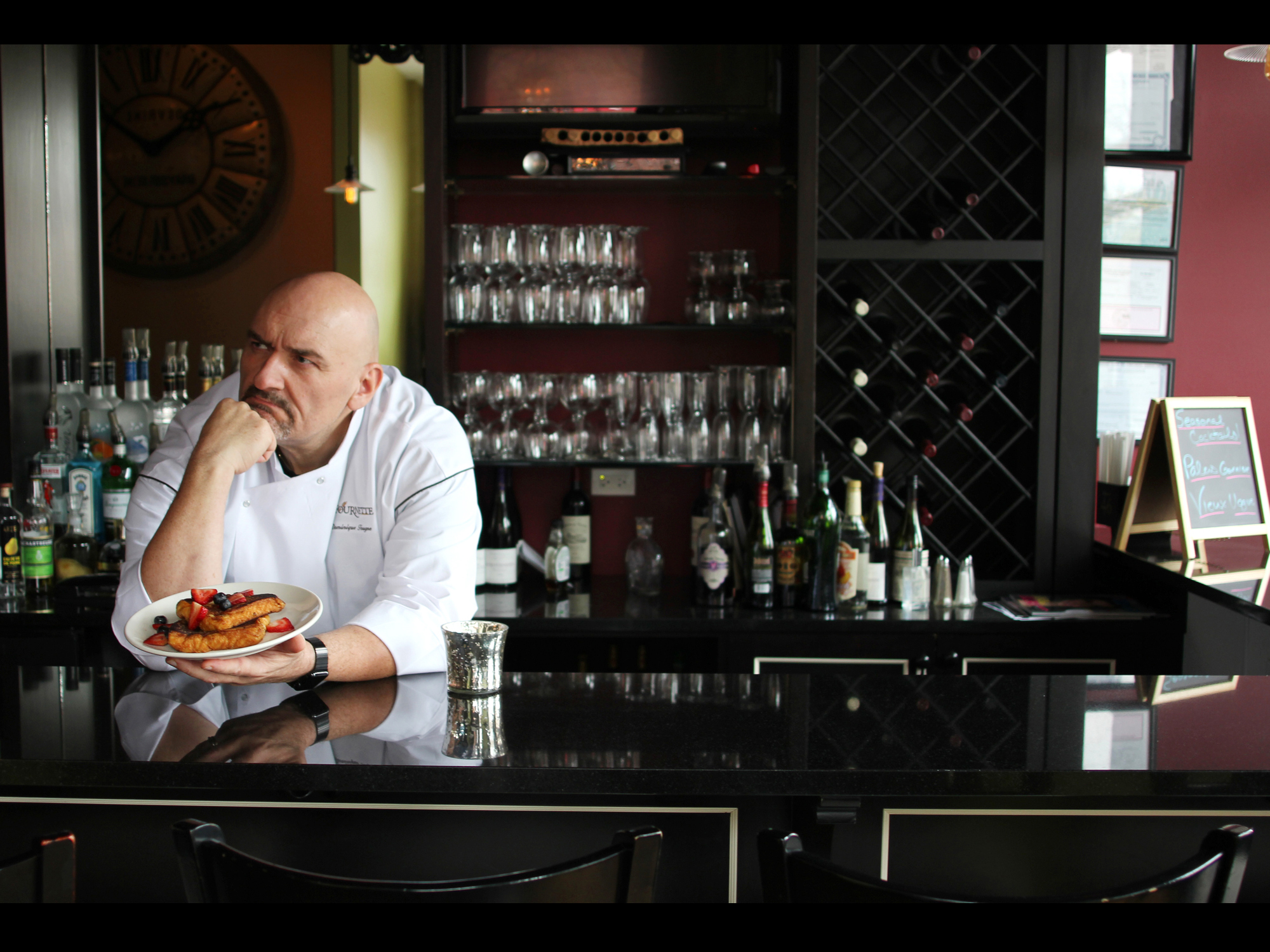
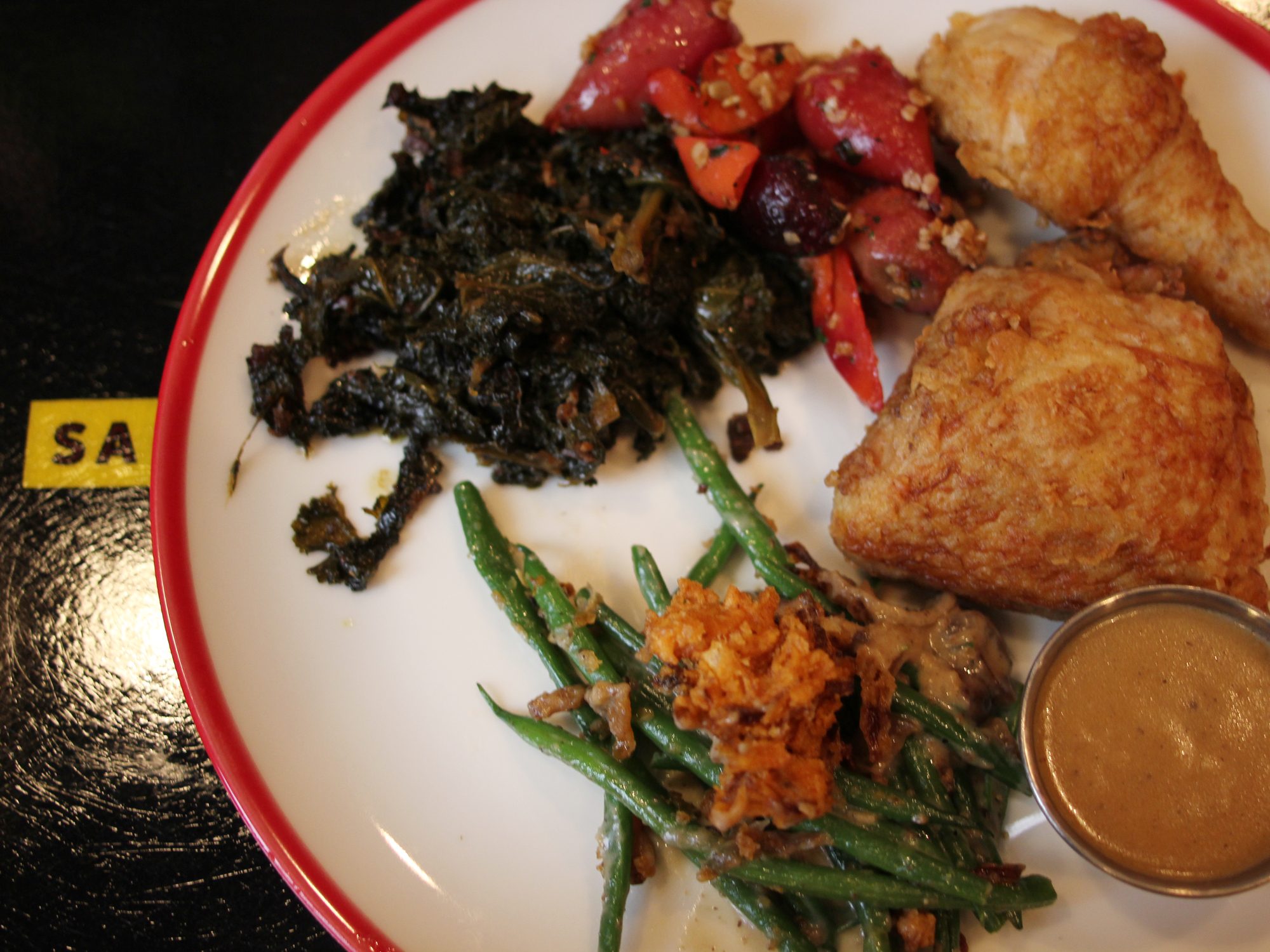
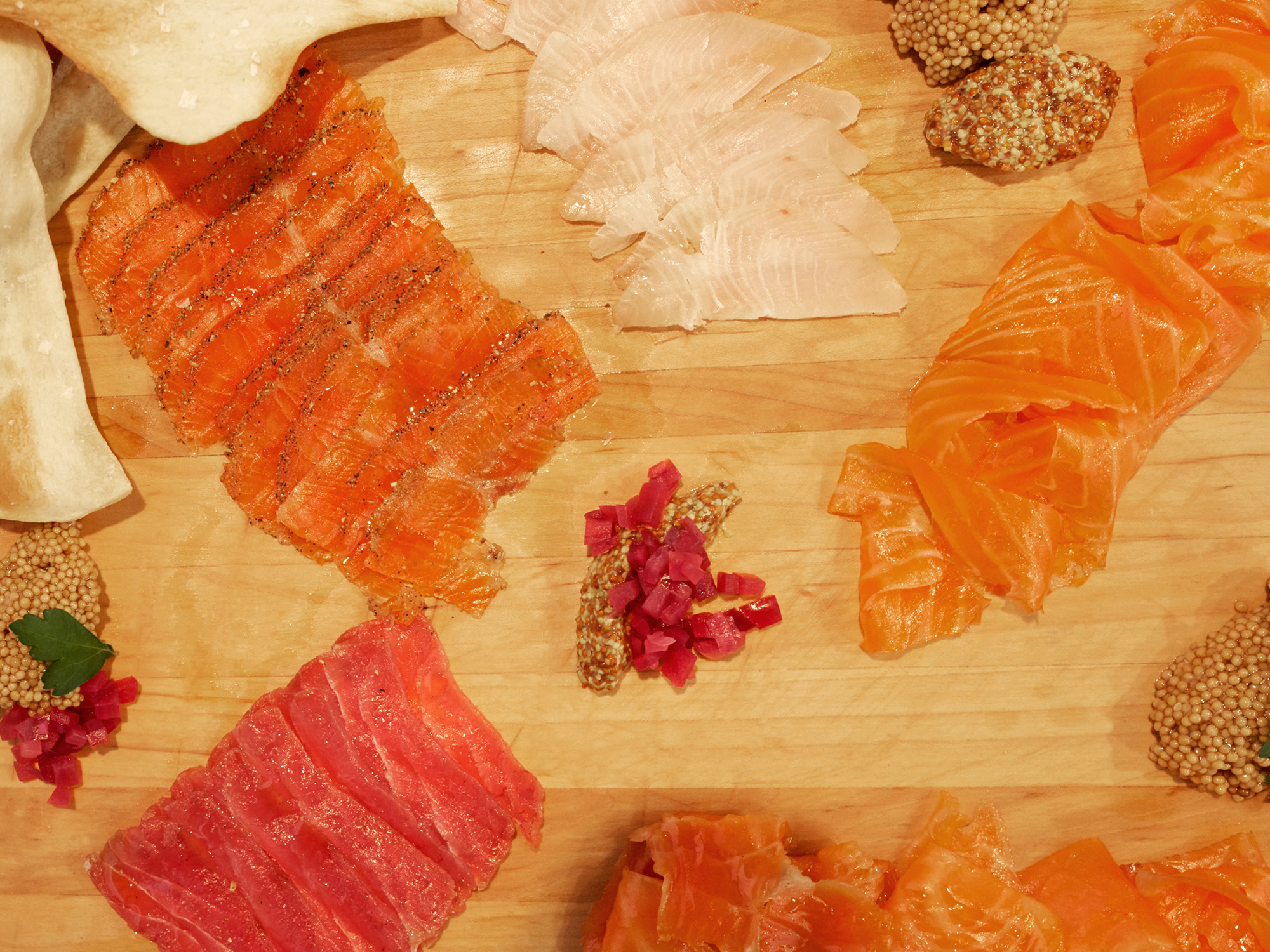
Everything written in this article is spot on. No lip service here. These people are the best, and so is this restaurant. I had the pleasure and privilege to work for (and with) them for their first couple of weeks. It is entirely my loss that I was not able to continue on in their kitchen. The Chicago Orioles. Best Team Ever! Thanks again, and crank up the Tortoise 🙂